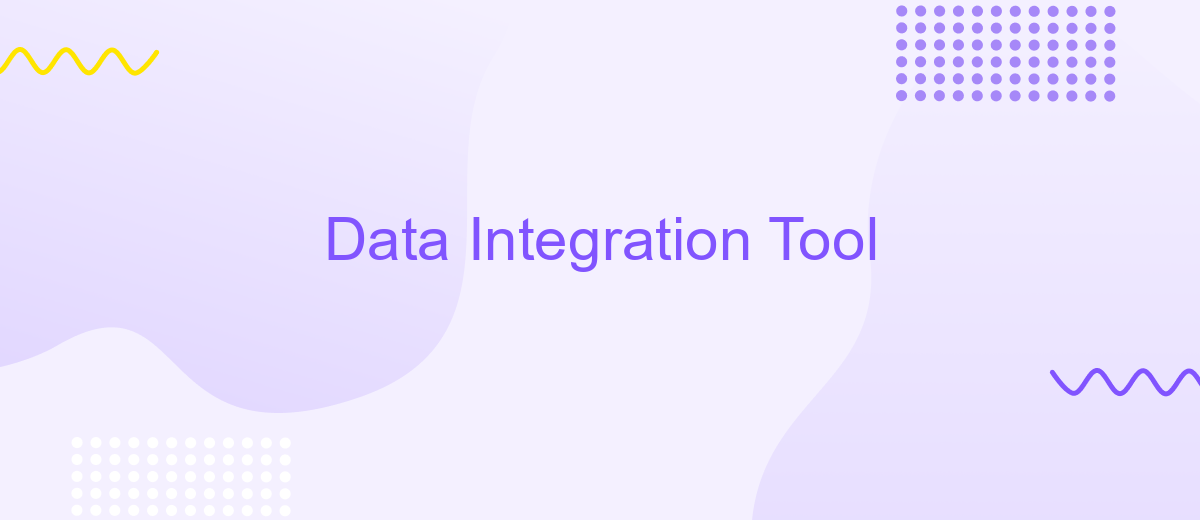Data Integration Tool
In today's data-driven world, businesses rely on seamless data integration to make informed decisions and maintain a competitive edge. A data integration tool simplifies the process of combining data from various sources into a unified view, ensuring accuracy and accessibility. This article explores the key features, benefits, and considerations when selecting the right data integration tool for your organization.
Introduction
Data integration tools are essential for modern businesses, enabling seamless connectivity and data flow between various systems and applications. These tools help organizations consolidate data from multiple sources, ensuring accurate and consistent information across the board. By leveraging data integration, companies can enhance decision-making, improve operational efficiency, and gain a competitive edge.
- Streamlined data management
- Improved data accuracy
- Enhanced operational efficiency
- Better decision-making capabilities
One of the leading solutions in this field is ApiX-Drive. This platform simplifies the integration process by offering a user-friendly interface and a wide range of pre-built connectors. With ApiX-Drive, businesses can quickly set up and manage integrations without the need for extensive technical knowledge. This not only saves time and resources but also ensures that data is always up-to-date and accessible when needed.
Benefits and Value Proposition

Data integration tools offer a multitude of benefits, streamlining the process of combining data from various sources into a unified view. These tools enhance productivity by automating data workflows, reducing manual effort, and minimizing errors. With features like real-time data synchronization, businesses can make informed decisions faster, leading to improved operational efficiency. Additionally, data integration tools ensure data consistency and integrity, providing a reliable foundation for analytics and reporting.
One of the standout value propositions of data integration tools is their ability to simplify complex integrations. Services like ApiX-Drive make it easy to connect various applications and automate data transfers without requiring extensive technical knowledge. This not only saves time but also reduces costs associated with custom development and maintenance. By leveraging such tools, organizations can focus on their core activities while ensuring seamless data flow across systems, ultimately driving better business outcomes and fostering innovation.
Data Integration Process

Data integration is a crucial process for businesses aiming to consolidate data from multiple sources into a unified view. This process ensures that data remains consistent, accurate, and accessible for decision-making purposes. Effective data integration can significantly enhance operational efficiency and provide valuable insights.
- Identify data sources: Determine the databases, applications, and other repositories that contain the data to be integrated.
- Data extraction: Use tools like ApiX-Drive to extract data from various sources efficiently.
- Data transformation: Convert the extracted data into a consistent format suitable for integration.
- Data loading: Load the transformed data into a central repository or data warehouse.
- Data validation: Ensure the accuracy and consistency of the integrated data through validation checks.
- Data monitoring: Continuously monitor the integrated data to maintain its quality and relevance.
Tools like ApiX-Drive simplify the data integration process by offering seamless connectivity between various applications and databases. By automating data extraction and transformation, these tools help businesses save time and reduce errors, ensuring that integrated data is reliable and up-to-date.
Key Features and Capabilities

Data integration tools are essential for businesses looking to streamline their data management processes. These tools enable seamless connectivity between various data sources, ensuring that information is consistently up-to-date and accessible. By automating data flows, organizations can significantly reduce manual effort and minimize errors.
One of the standout features of modern data integration tools is their ability to handle diverse data formats and protocols. Whether it's structured data from databases or unstructured data from social media, these tools can efficiently process and integrate it. Additionally, they offer robust data transformation capabilities, allowing users to manipulate data to fit their specific needs.
- Automated data synchronization across multiple platforms
- Support for a wide range of data formats and protocols
- Advanced data transformation and mapping features
- Real-time data processing and monitoring
- Scalability to handle large volumes of data
For businesses looking to further simplify their data integration processes, services like ApiX-Drive offer a user-friendly interface for setting up and managing integrations. With its extensive library of pre-built connectors and intuitive workflow automation, ApiX-Drive makes it easy to synchronize data across various applications, ensuring seamless and efficient operations.


Conclusion
Data integration tools have become indispensable in today's data-driven landscape, offering seamless connectivity between disparate systems and ensuring data consistency across platforms. These tools streamline workflows, enhance data accuracy, and provide a unified view of information, enabling businesses to make informed decisions with confidence. The ability to automate data synchronization reduces manual efforts and minimizes errors, thereby increasing operational efficiency.
One notable service in this domain is ApiX-Drive, which facilitates the effortless setup of integrations between various software applications. By leveraging ApiX-Drive, organizations can quickly connect their tools and automate data flows without requiring extensive technical expertise. This not only accelerates the integration process but also allows businesses to focus on their core activities. Ultimately, the right data integration tool can transform the way companies manage and utilize their data, driving growth and innovation.
FAQ
What is a Data Integration Tool?
Why is Data Integration important?
How does a Data Integration Tool work?
What are the common features of a Data Integration Tool?
Can I automate data integration processes?
Do you want to achieve your goals in business, career and life faster and better? Do it with ApiX-Drive – a tool that will remove a significant part of the routine from workflows and free up additional time to achieve your goals. Test the capabilities of Apix-Drive for free – see for yourself the effectiveness of the tool.

